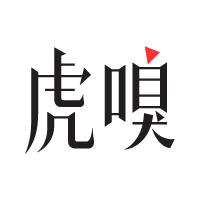
扫码打开虎嗅APP

In 2010, China decided to expedite and push forward the convergence of "three networks", namely the telecommunications network, the broadcast network and the internet. But from the very beginning, this effort was confronted by a variety of difficulties, mainly from the broadcast network.
Today, one can easily connect a computer to a TV network. The boundaries between different networks, like IPTV, OTT and online TV, have blurred. This has posed a threat to China’s broadcast authorities, State Administration of Press, Publication, Radio, Film and Television (formerly known as SARFT).
For years, the authorities have been carrying out harsh regulations on television. For example, it is forbidden to air foreign shows between 7 and 9 pm. But rules like that do not apply to online videos.
As more and more Chinese go online to watch TV programmes, the authorities have been worried that they might be Why do we have to adapt to the internet?" said one official, "why can't the internet adapt to us?"
The situation worsened in the second half of the year, as the authorities introduced a number of new regulations on online video services. In late October, a dozen of local television stations put a halt to an IPTV box launched by China Telecom. It seems that the broadcast authorities are going to regulate the IPTV in the telecom network, after it secured its control over online TV. How to regard these moves?
According to related sources, the concept of the Three-Network Convergence was put forward back in 1994. As it involves different departments and stakeholders, the project did not enter the practical stage until 2010. According to China's State Council, the convergence is divided into two critical stages.
The first stage covered from 2010 to 2012. It emphasised legislature and the convergence of the broadcast and telecom networks. The second stage lasts from 2013 to 2015. In this stage, the convergence of the three networks should be implemented, "proper" competition should be in place, and a “new” regulation system should be established.
What are the broadcast authorities doing in these two stages? From 2010 to 2012, the broadcast authorities fought against the telecom and internet industries over licensing and control. On the level of government administration, it was mainly fighting against the telecom industry. In this stage, companies in these three networks all obtained their licenses. But most of them were from the broadcast network.
From 2013 onwards, with online video services developing rapidly and a variety of "TV boxes" emerging, the advantages that the broadcast authorities obtained in the first stage began to look less significant. That was why since the beginning of the second half of the year, the authorities began to fiddle with internet TV and the video services that the telecom industry might be about to crack.
Therefore, three years on since 2010, the broadcast authorities wasted three years without any achievement in network construction or integration.
After China Telecom launched "Yue Me", a product for smart family service, a question was raised: should the broadcast authorities form a coalition with the telecom industry or make an enemy out of it? From the news that some television stations asked Yue Me to stop, the broadcast industry has once again chosen to confront. Sources from China Telecom said this would not affect them much. But in fact, if the telecom industry does not clearly define their relation with the broadcast network, many of their businesses would be affected significantly.
With the Three-Network Convergence coming to the end of the critical second stage, the battle between closed powers and open powers has entered into the critical window period. The telecom industry, which is relatively more opener, has chosen to embrace openness, with operators putting forward their transformation plans respectively.
But it is what it does that defines it. From what it did, the broadcast authorities have adopted a stand-off approach to both the internet and telecom industries. That perfectly reflects how the broadcast industry has failed to effectively transform itself in the process of the convergence and to adjust its internal relations. That is why the authorities often use its administrative power to repress others.
The Three-Network Convergence is about upgrading the broadcast network and integrating it with the telecom network and the internet. As it did not make efforts to overhaul itself, it is not likely to finish it effectively within the remaining time. Therefore, the project would struggle to achieve its stage target by 2015. In particular, the relation between competition and regulation is a long-term task. In this process, the broadcast authorities have to make more efforts. It is not a question whether it is willing to do so. It is a decision that it has to take in the face of the power of openness. Otherwise, users will express their opinion to the authorities by voting with their feet. Of course, this government may well promote the project with administrative measures.
Overall, from the current situation, the broadcast authorities are waging wars against on the front of internet as well as telecommunications to protect their interests. But it can be expected that finally the closed system will be forced to become more open. Open will triumph over closed. It is time for the broadcast authorities to think about whether they will play a reformist role in this process, or a conservative role.